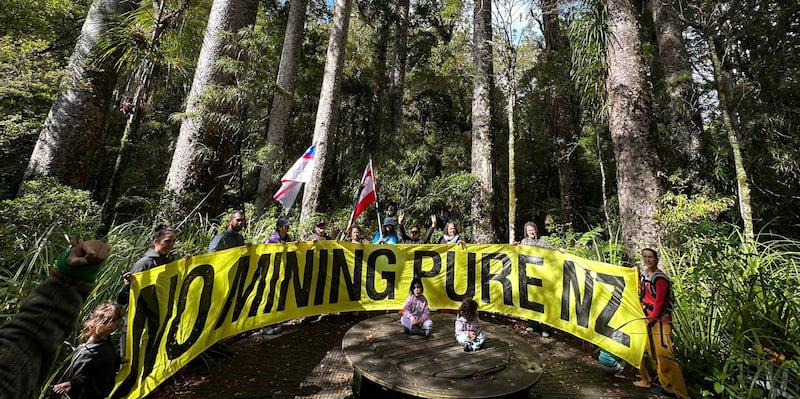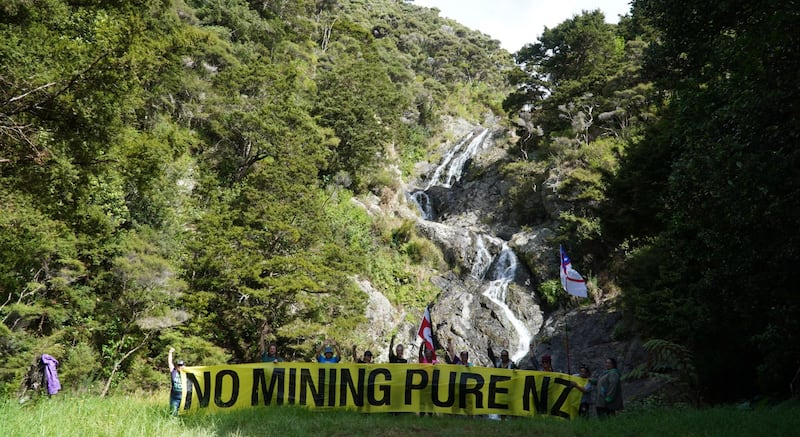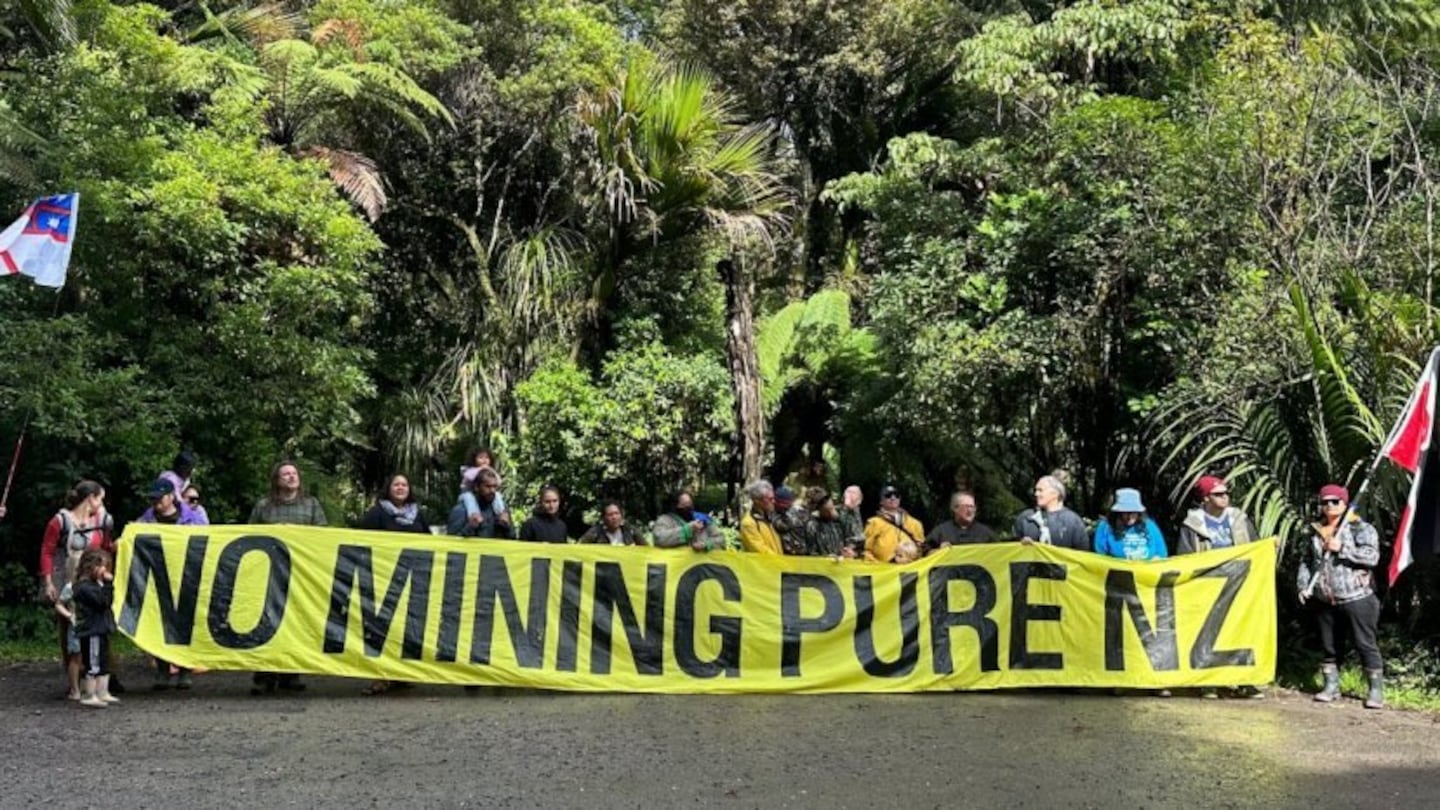Protestors against lithium mining in Te Tai Tokerau mark the 40,000-strong ‘March Against Mining’ demonstration down Auckland's Queen St in 2010, with a replica banner. Photo / Supplied
Whangaroa hapū and Forest & Bird say lithium mining in Te Tai Tokerau could put at risk the last 1% of unlogged ancient kauri at the Manginangina Scenic Reserve in Puketī Forest.
A prospecting permit for lithium and rare earth elements was granted for the area late last year to Mineralogy International, owned by controversial Australian mining billionaire Clive Palmer.
The Whakarara Conservation Area behind Te Ngaere Bay and above the water source of Whangaroa hapū is included within a different prospecting licence held by the same company.
“Mining affects the whenua, taonga and wai. Allowing mining on incredibly important conservation land like Whakarara maunga could destroy native forests and lead to pollution of waterways out to Whangaroa Harbour and the sea,” Bianca Ranson, of Ngāti Kahu ki Whangaroa and Forest & Bird, said at a joint rally opposing the plans today.
The groups held a replica banner of one from the front of the 2010 ‘March Against Mining’ that over 40,000 people took part in down Queen Street, Auckland.

Protestors gather at the Manginangina Kauri Forest, that Forest & Bird and Hapū say could be put at risk by rare earth mining. Photo / Supplied
"In Whangaroa it has been an intergenerational fight to keep mining companies away. Our people have told the government again and again that we don't want mining here but it continues to allow more prospecting and exploration,” Ranson said today.
Seizing on the promotion of Northland MP and Conservation Minister Willow-Jean Prime to cabinet yesterday, the group called on Prime to make a statement by revoking the licences of the Australian miner.
“We ask her to move swiftly, particularly now that she is in the cabinet, to end new mining on current conservation land. Our future is the return of our whenua, not more desecration and extraction that will have impacts on generations to come.”
Hapū member Robyn Tauroa says the rohe is home to underground streams through the mountains and whenua that they don’t want polluted.
“We have been standing firm to protect the wai of Whangaroa from mining pollution for at least 30 years, and that won’t be stopping any time soon.”
Ranson says the whenua is also part of a combination of private land, Māori land, and public conservation land that is under Treaty claim, and the moves show disregard for Te Tiriti.
“The government is making another mess before cleaning up the first one."
Forest & Bird has helped the public write to MPs in favour of a bill to end new mining on conservation land and held protest banner events across Aotearoa urging the government to adhere to a 2017 election manifesto promise.

Protestors assemble in front of a waterfall within the Whakarara Conservation Area which Hapū and Forest & Bird say could be put in danger by rare earth mining. Photo / Supplied
In 2022 the government declined support for a bill championed by Greens MP Eugenie Sage that would have instituted the ban, claiming it went too far by including a clause to ban all coal mining, on any land, by 2025.
Over 150,000 hectares of conservation land have been given exploration and prospecting permits, and at least 78 mining access arrangements on conservation land have been approved since 2017.
“We need the government to hurry up and fulfil its promise to end new mines on conservation land before the election.” Forest & Bird Northland conservation manager Dean Baigent-Mercer said.
“Local communities should not have to continually fight decade after decade to prevent mining companies attempts to destroy ancient forests, wetlands and rivers that they thought were already protected.”



